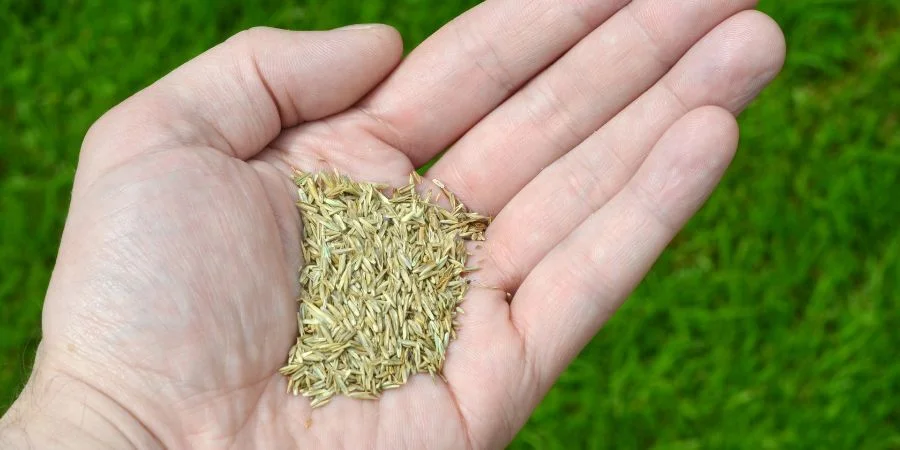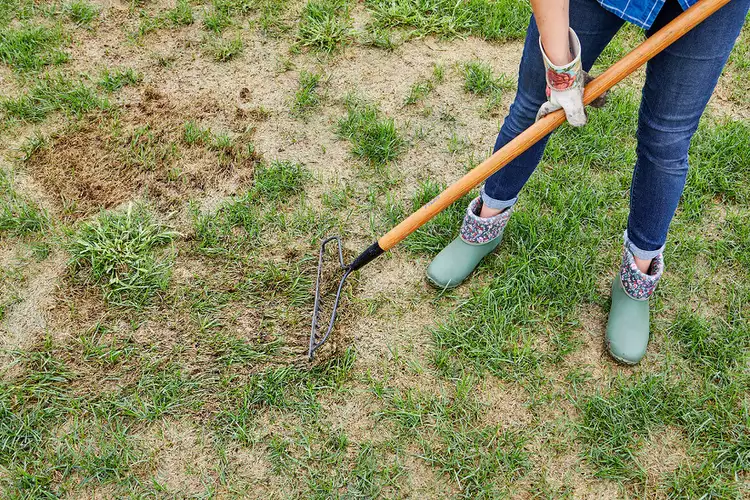Does Mulch Kill Weeds?
Last Updated on July 26, 2024 by Duncan
Weeds are ugly, a nuisance, and can even be invasive. They steal water and nutrients from your plants, rendering them malnourished. If you are looking to put mulch in your garden, you must be wondering, does mulch kill weeds?
Yes, mulch does kill weeds. Mulch of any kind prevents light from reaching the weed seeds; hence they don’t sprout.
The mulch also prevents sunlight from reaching the roots, so the few seeds that might have sprouted they don’t have enough energy to push through the mulch, so they simply die.
How thick should mulch be to prevent weeds?
For weeds to grow, they need light and warm soil. To kill them using mulch, put down a 2-to 3-inch layer of mulch. To maintain the layer, replenish the mulch as it decomposes or blows away.
Using a weed barrier underneath
Sometimes you will find weeds that are tough and persistent and won’t die even when you place a layer of mulch on them. To keep off these types of weeds, put a layer of weed barrier underneath.
Begin with pulling up any weeds already growing in the area you want to mulch. Using a trowel, remove the roots of the weeds to reduce the chances of them growing back.
Once you are done, rake the area smooth and remove any old mulch, rocks, or debris that can poke a hole in the weed barrier.
Follow up by spreading a layer of a plastic barrier over the plating area. If you already have plants growing in the area, cut holes in the plastic to fit over them. Along the edges of the plastic, overlap the strips so the weeds can’t sneak their way through.
If you want to plant new plants into the area, cut small “X” shapes into the weed barrier and place one plant inside each hole. Once you are done, apply a 2-to 4-inch layer of mulch over the surface of the weed barrier.
Remember to spread mulch over the edges of the weed barrier, so the plastic doesn’t show.
Tip: If you are environmentally conscious and looking for a more environmentally friendly way to kill the weeds, use old newspapers as a weed barrier instead of plastic. Lay the newspapers then cover them with mulch.
When you use newspapers, you should note that you will have to replace them and mulch more often as newspapers degrade with time. You can also use fabric weed barriers, although they aren’t as effective as plastic.
When choosing the plastic weed barrier, avoid clear plastic as it lets in sunlight that promotes weed growth. For best results, always use black plastic.
Don’t use the weed barrier around trees and shrubs as it prevents the roots from getting adequate water.
What mulch can’t do
While mulch is highly effective at killing weeds, it has its limitations. For example, if you don’t lay the black plastic properly, and some light goes through, the weeds will start growing.
Also, mulch won’t kill weeds that are already growing, so you should first remove them before placing the mulch.
If you are one of the people wondering, do you need to pull weeds before mulching? Yes, you need to do it; otherwise, the weeds won’t die.
What is the best mulch to prevent weeds?
Different mulches are ideal for different applications. You can use small stones and pebbles, but they don’t break down and improve the nutrient value of the soil.
Some gardeners use straw in their vegetable gardens, but unfortunately, it tends to contain plenty of weed seeds, so not the ideal mulch to use when you don’t want weeds in your garden.
Grass clippings are also popular with some gardeners, but they lack aesthetic appeal.
The best mulch to prevent weeds is bark mulch. It not only prevents the weeds from growing, but it also gives the garden a clean, finished look. Since its natural, it repairs the soil as it breaks down over time.
Valuable mulching tips
You need to be strategic of how you use the mulch. If you have a bed of perennials, wait until the flowers push through before you apply the mulch.
When planting annual flowers, plant them first, then mulch the surrounding area. If mulching around trees, roses, or shrubs, don’t pile the mulch against the stems and trunk bases as you will kill them.
Since bark mulch breaks down naturally over time, replenish it annually to maintain the 2-to 3- inch layer.
Can you get rid of weed in mulch?
If you have installed the weed barrier, but still weeds get through the mulch, you can still get rid of the weeds in the mulch. You can do this in different ways that include:
Weed pulling
Here you need to physically pull the growing weeds from the mulch using your hands. When pulling the weeds, time them, and catch them before they set seed.
Using herbicides
Rake mulch off to the side, then hoe or pull any existing weeds. You should then apply the herbicide while strictly following the instructions given by the manufacturer.
Pay attention to the label as some plants can’t tolerate certain types of herbicides.
For example, be cautious when using glyphosate as it tends to kill any broad-leveled plants it comes into contact with.
If you have to use glyphosate, apply it directly to weeds with a paintbrush. Be cautious not to touch any plants with it.
You can also protect the plants by covering them with a cardboard box. Don’t remove the box until you have treated the weeds.
Deprive weeds of water
Just like plants, weeds can’t survive without moisture. To deprive the seeds of water, consider using drip irrigation or soaker hoses. These systems deliver water to the root zone of the plants at the soil level.
The soil surface and area surrounding weeds stay dry, and over time, they dry out and die.
After applying the herbicides, carefully replace the mulch without disturbing the treated soil. To add a layer of protection, spray herbicides over the mulch.
Liquid herbicide works the best as it adheres to mulch instead of falling through the soil.
Valuable weeding tips
For you to get rid of as most weeds as possible, you should consider several tips:
After uprooting the weed, don’t leave the flower on the ground. This is because even after they are pulled, weeds such as Purslane and chickweed continue producing weeds.
Instead of leaving them on the ground, put them aside or put them in the trash can,
While you should have enough mulch over the weed barrier, don’t pile too much of it. This is because as the mulch breaks down, it provides the perfect medium for weed growth from wind-borne seeds.
For best results, limit the mulch dept to 2-3 inches.
When applying mulch, inspect it and ensure it does not contain any weeds. Mulches such as straw and wood chips contain weed seeds that don’t add much value to your efforts.
To ensure that the mulch is clean and quality, get it from a reputable store.


